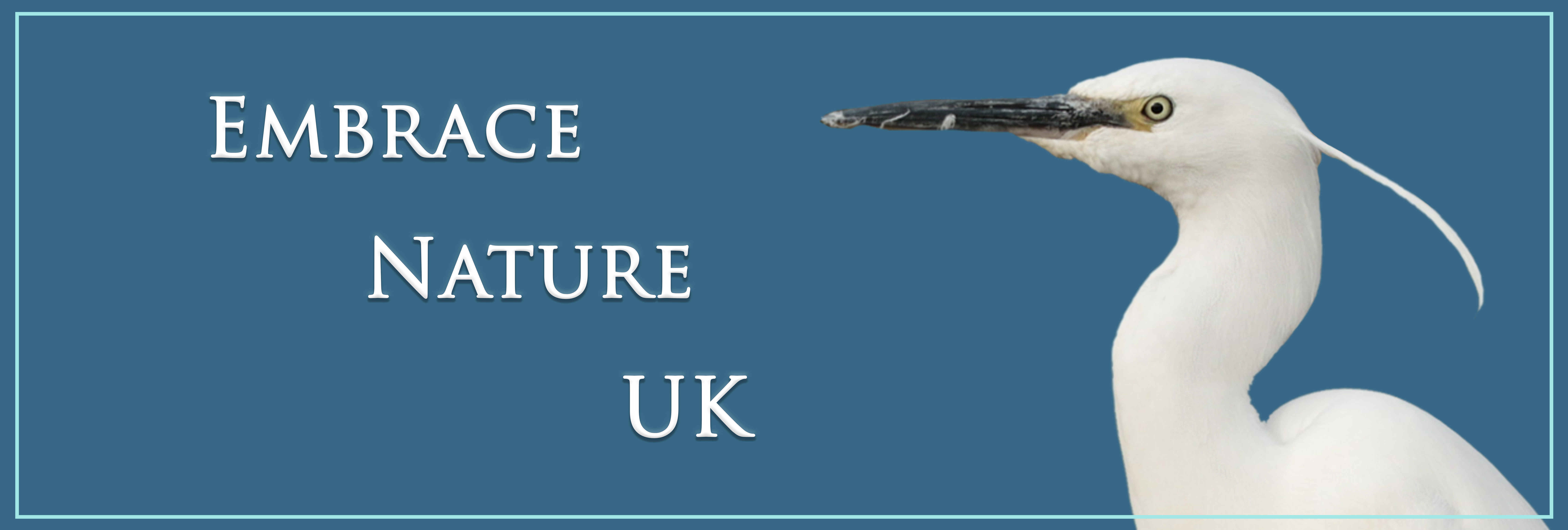As I poured out the previous night’s water from the hedgehog bowl, I squirmed at the sight of a fully-bloated tick; swimming about in the water before I disposed of it. Meanwhile I fantasised about a world in which ticks do not exist. There are a few animals that eat ticks but it’s a struggle to understand what their purpose is…..and there it is…I’m a human being and conceited enough to believe that this tiny creature needs to add something to my life in order to live.
Cull:
“Verb 1 choose, gather. 2 remove or kill (inferior or surplus animals) from a herd”
(Collins Essential Dictionary and Thesaurus 2004)
This thought pattern is not unusual for humans even when we try so hard to be selfless. The very fact that we are the most successful species on the planet shows that we are selfish; as to survive is to think first and foremost of ourselves. Therefore it shouldn’t come as any surprise that the human race will kill other animals, not for food, but because they ‘get in the way’ of other aspects of our survival.
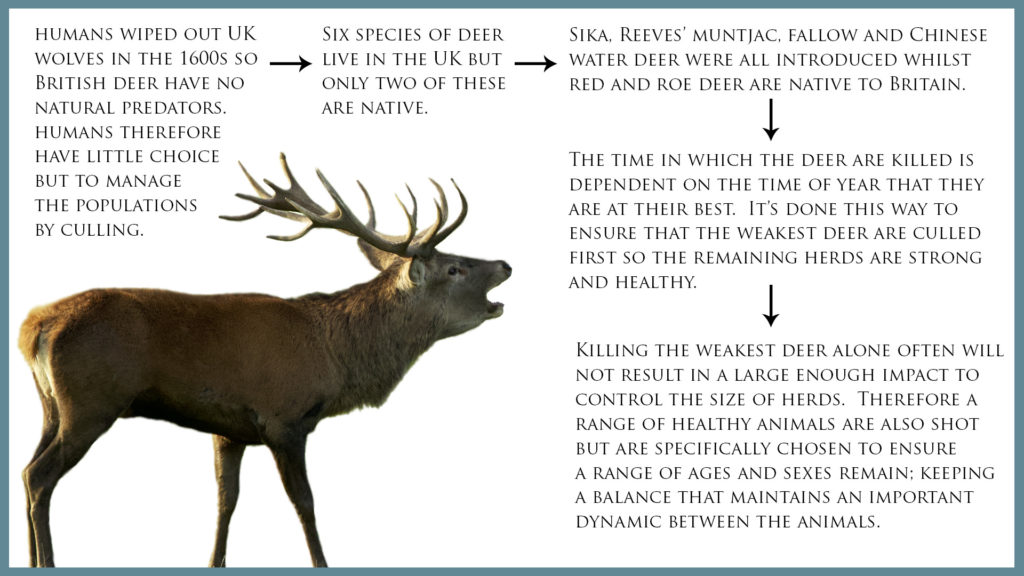
The creatures that we kill and the way in which we do it has changed significantly over time. Once upon a time it would have been something that many people took part in as an every day activity. If you liked the look of a moth, you’d kill it and pin it to a book, if you wanted to prove that you’d seen a ring ouzel, you’d kill it and stuff it.
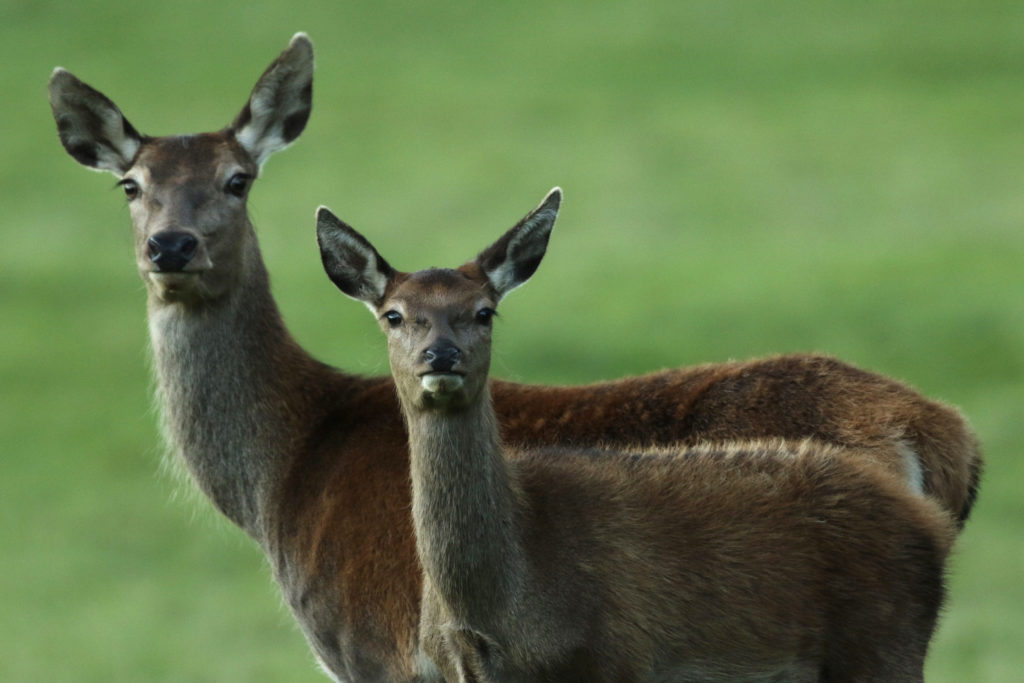
Times have changed now that we understand the impact that we have had on species by killing them, but we still kill in the name of ‘conservation’, ‘disease prevention’, ‘farming’ and so forth. The relatively recent discovery that even the RSPB condones culling to protect the curlew is enough to send your head in spirals. So when is culling acceptable and when is it going too far? Or is culling acceptable at all? By wiping out certain predators in the UK we have put ourselves in a position where we need to manage some populations but more recently questions have arisen regarding culls that serve a different purpose.
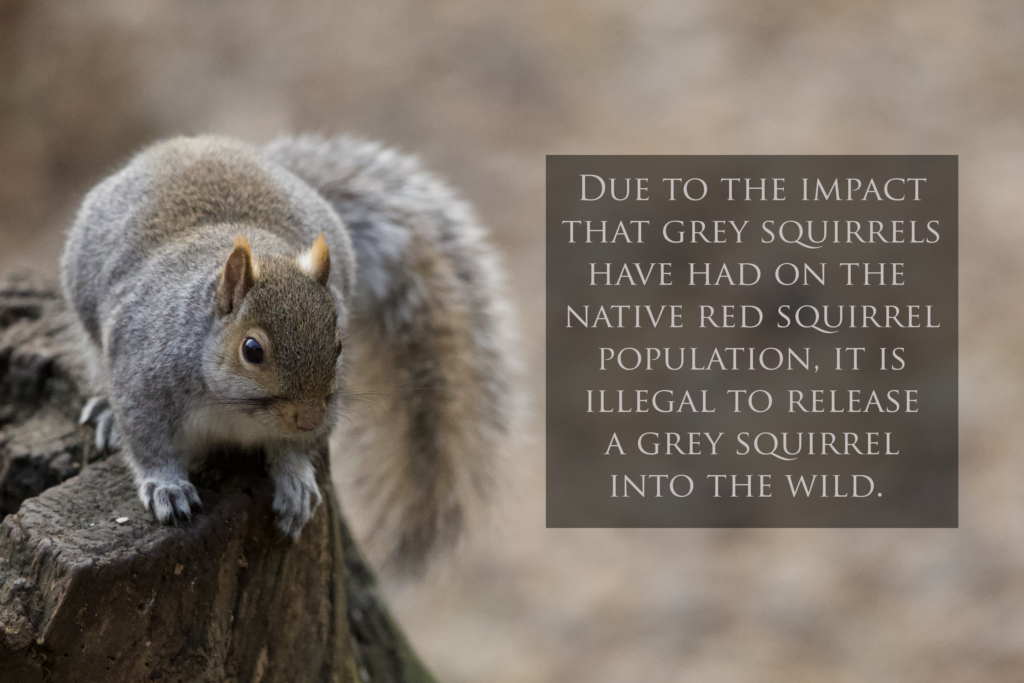
It’s impossible to gain a balanced view as many people sway one way or the other. We certainly have our own views here at Embrace Nature UK but we feel it’s important to understand as much of the discussion as is possible and to see if we can dig out some facts from the primordial soup of opinion. Therefore we have put together this information for you to make up your own mind about culling.
The RSPB and Culling
Around August last year, a lot of RSPB members decided to withdraw their support from the RSPB following controversy surrounding the crow and fox cull in the name of saving the Eurasian curlew.
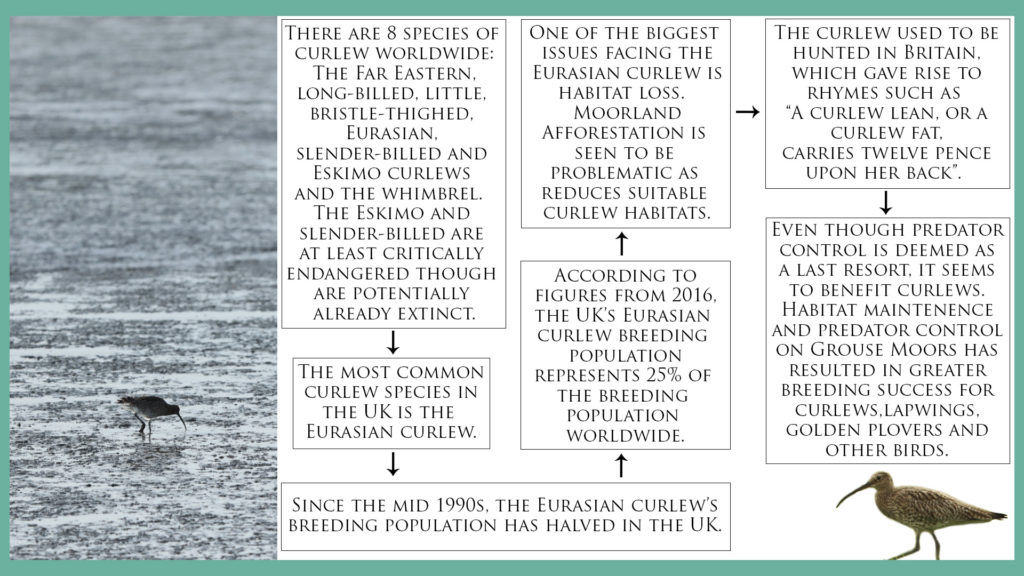
There are a lot of mixed opinions surrounding this decision but the RSPB have explained that their aim is to “keep common species common and recover threatened species”.
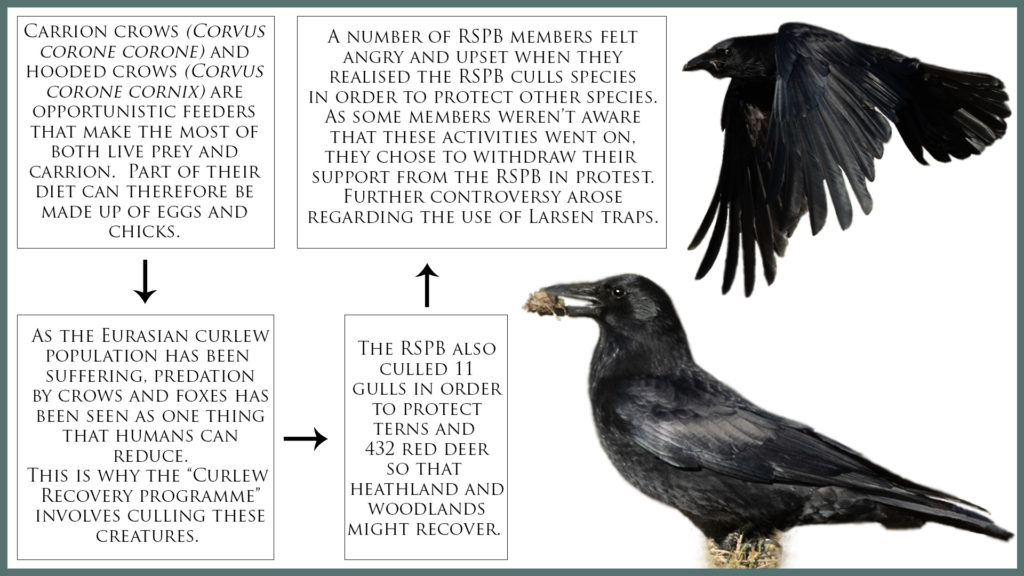
So what does it take to reach the decision to cull rather than take non-lethal action? Well, as stated in Martin Harper’s blog on the RSPB website, there are a set of standards that have to be tested before resorting to culling:
It’s important for the RSPB to establish how serious the problem is before taking action.
They need to explore non-lethal methods and deem them as ineffective or impracticable.
They need to know that lethal methods will be effective in solving the issue.
It’s important that the method taken will not negatively affect the conservation status of the target in question or of any other species.
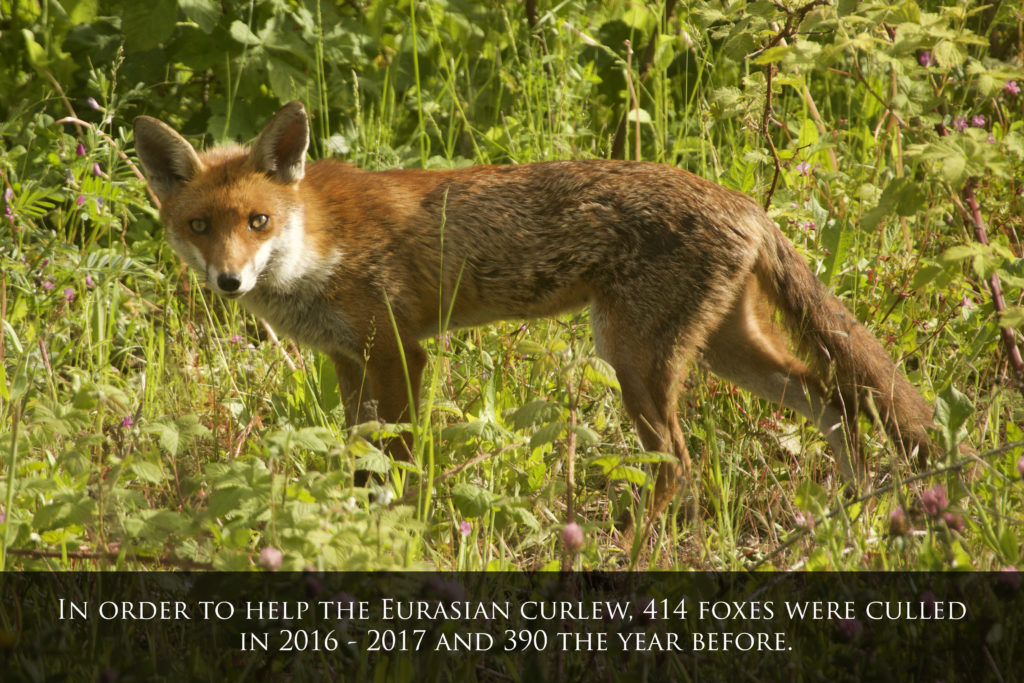
Some of the locations in which the crows are targeted make shooting inappropriate, in which case the RSPB has taken to using Larsen Traps to capture live birds that will later be killed. This has received a lot of negative reactions with many people pointing out that Larsen Traps have been banned in their country of origin – Denmark.
What is a Larsen Trap?
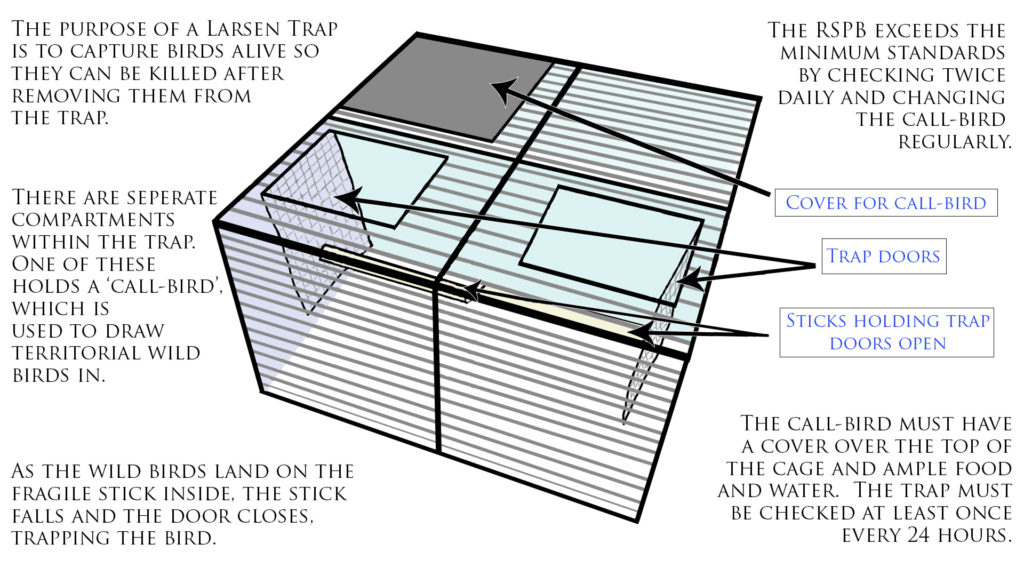
Why Are Members Angry?
When first joining ‘The Royal Society for the Protection of Birds’, it seems unlikely that people will immediately assume that as part of protecting birds, the RSPB will also cull. It has therefore upset a lot of people when they’ve found out that this is what happens but their argument has more depth than that.
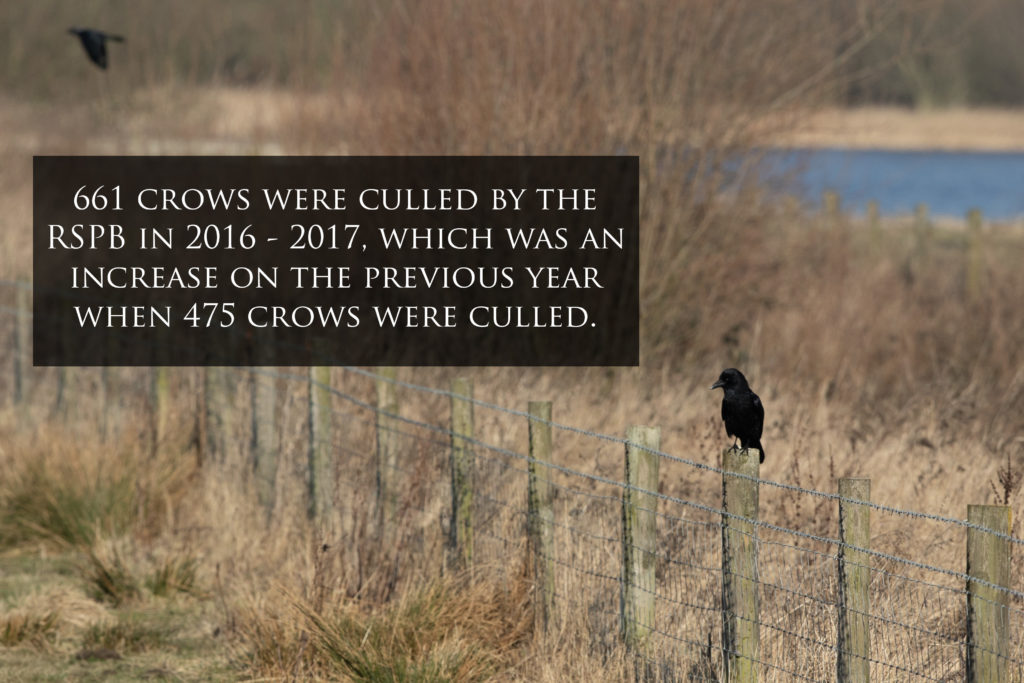
The use of Larsen Traps has made people even angrier as they feel that they are cruel. As the trap is on the ground, the call-bird is potentially in the firing line for being terrorised by predators and as birds are caught, it may witness them being killed. The Larsen Trap also may end up capturing other creatures apart from the intended targets. This should lead to their release but in some cases in the past, Larsen Traps have been mis-used; leading to the disposal of unintended targets. The RSPB has standards in terms of the welfare of the call-bird and how often the trap is checked but the use of the trap in the first place is leaving a bad taste in many people’s mouths.
The RSPB has chosen to gain help with the cull by hiring gamekeepers from shooting estates. This has come under scrutiny from some members as they feel that there could be a conflict of interest between the protection for birds of prey that the RSPB promotes and the illegal shooting of these birds that has been performed by some gamekeepers in the past. As it is difficult to always ‘pin down’ those people involved in these activities, some people fear that the gamekeepers involved in the cull may not represent the same values as the RSPB.
Other people have questioned whether the corvid and fox populations can withstand the numbers being killed. The RSPB feel that their scientific approach to the issue will ensure that these populations remain stable as both predators are very successful in the UK.
Wild Boar
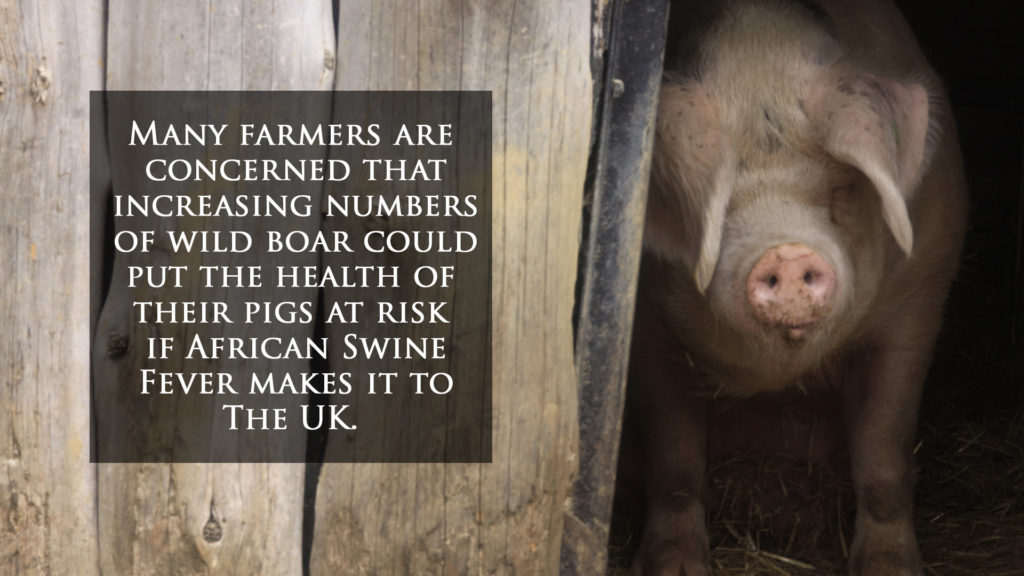
As African Swine Fever stretches across the world invading countries such as Belgium, Poland, Latvia and China, governments are trying to gain control of the issue whilst pig farmers are fearing the worst. China are attempting to develop a vaccine, but in the meantime many countries are resorting to a cull of wild boar to reduce the chances of the fever spreading.
African Swine Fever is a highly contagious, deadly virus that is harmless to humans but fatal for pigs. There is currently no cure or vaccine. Symptoms include a high fever, a gradual loss of appetite, shivering, abnormal breathing, coughing (in some cases) and difficulty standing. Infected pigs eventually fall into a comatose state before dying.
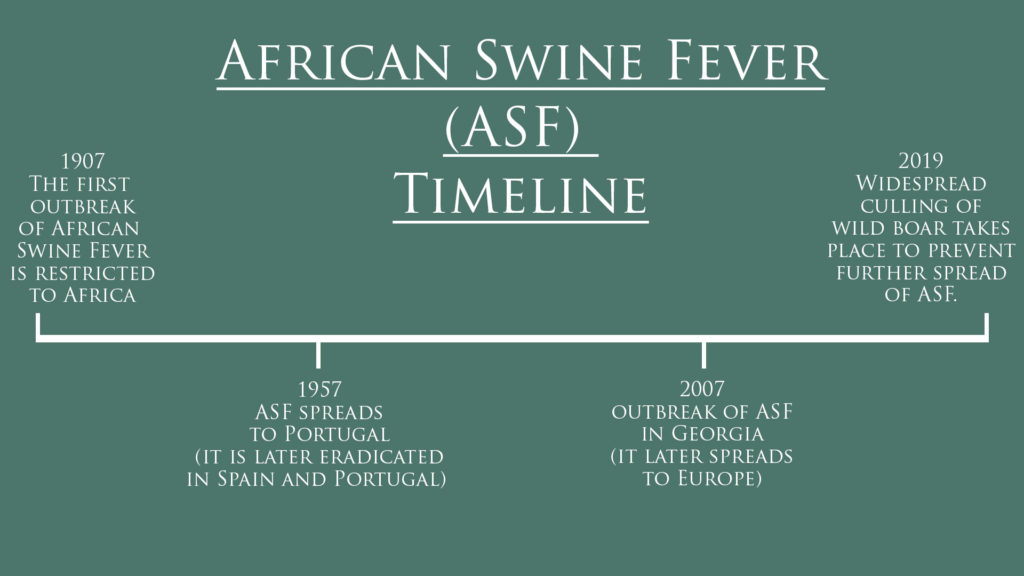
Whilst native to the UK, until recently wild boar were not known in the British countryside since the Middle Ages when, in the UK, they were hunted to extinction. Boar farming in the 1980s is thought to have led to the illegal release or escape of some of the animals.
The wild population has been extremely successful with approximately 1600 wild boar living in the Forest of Dean alone. The numbers continue to grow whilst the African Swine Fever epidemic galvanises the UK into taking preventative measures. In the Forest of Dean, the Forestry Commission wants to reduce the wild boar population to 400 individuals, whilst rangers are being taught to recognise African Swine Fever symptoms. Some pig farmers fear that reducing the population will not be enough to protect their livelihoods and would prefer a cull of all wild boar in the UK if African Swine Fever crosses our borders.
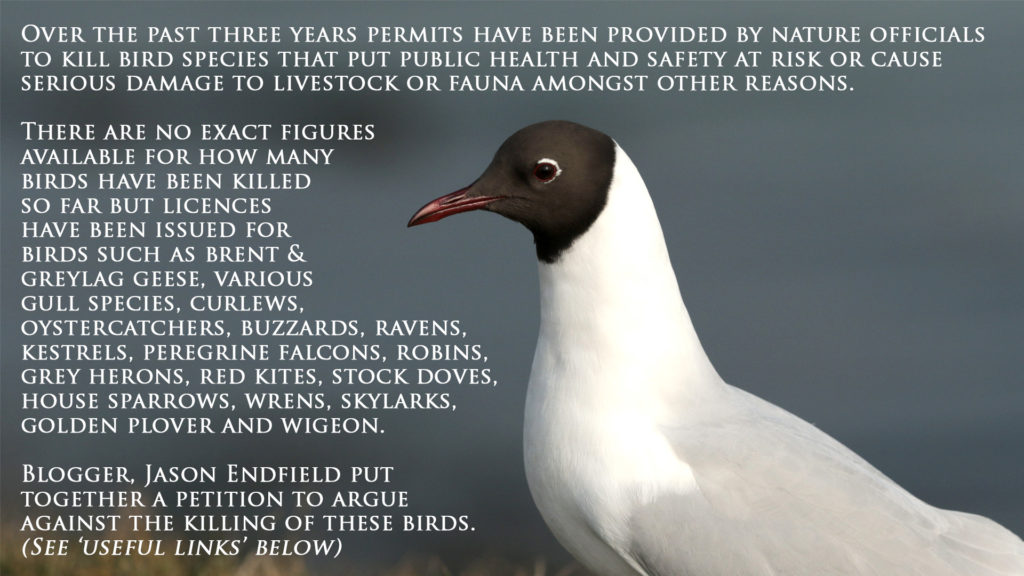
Biosecurity has been tightened in the UK, ensuring no meat products, wild boar or live pigs from affected areas can reach us. Not everywhere is lucky enough to have a sea moat protecting them from disease. Poland seemed to be planning to take drastic measures by culling almost all of their wild boar though after public outcry and a petition of over 350,000 signatures, they have put this information down to a misunderstanding and instead the cull is now said to be somewhat smaller. The numbers of wild boar being culled worldwide are significant though, which begs the question, is this the right course of action?
Some people would say that it isn’t, with one argument being that culling doesn’t always work. In Alberta they learned this the hard way when a bounty of $50 was put on wild boar. Instead of decreasing the population, the hunting separated the sounders (groups usually of female and young wild boar), which pushed them into creating new groups that in turn increased the population.
If African Swine Fever reaches the UK though, the outcome could be catastrophic for the pig farming industry and even some species of pigs. As quoted in an article on the ‘Gloucestershire Live’ website, Richard Vaughan, a Wye Valley farmer, has half of the UK population of middle white pigs – a species so rare that they number only about 200 individuals in Britain.
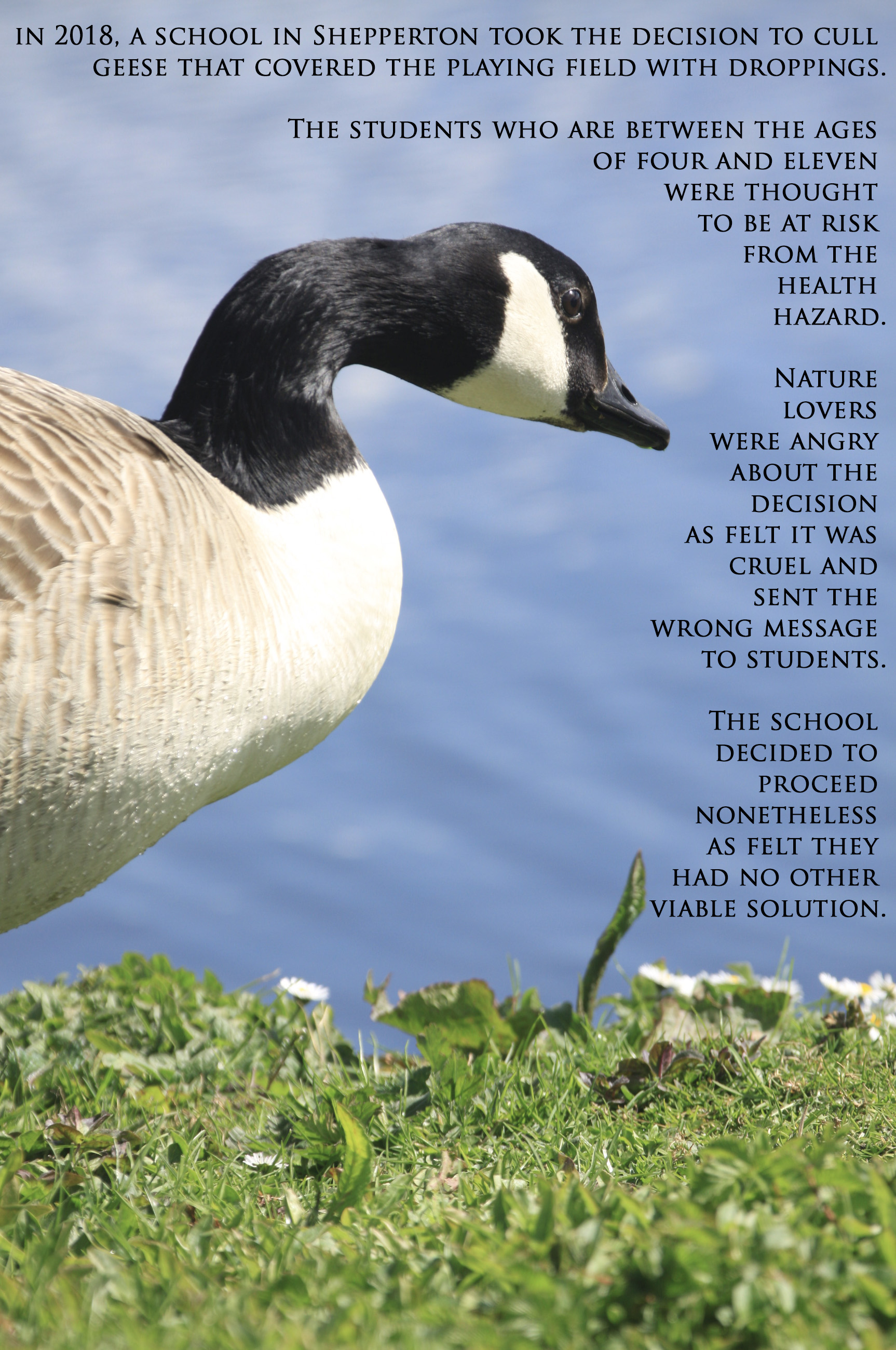
African Swine Fever is not the only issue that leans upon the fate of wild boar. Sadly they’re not always welcome where they reside. As the population continues to grow, they sometimes venture out of the woodland and into gardens, onto sports grounds, cemeteries and into roads. This has resulted in traffic collisions and great disruptions to ground that people would rather not see excavated.
The wild boar situation now is a classic example of how humans and wild animals encroaching on eachother’s environments causes a discussion riddled with controversy. We are today paying for the mistakes of our ancestors who hunted the UK’s top predators to extinction and introduced non-native creatures. With constant issues arising from the reintroduction of some native species and the negative impact from some non-native species, we struggle to handle it and often resort to simply killing them again as our ancestors did. But can the cycle be broken or should we continue to cull to protect our livelihoods and communities? All sides of the argument can be understood but where do morals come into it? Is our primal urge to think of ourselves first the correct action to take now that we have the means to think a little differently? Hopefully you can reach your own conclusion, but who will ever know if it’s the correct one?
Where Do We Stand?
This has been an extremely difficult blog to research and write as the arguments on each side are so strong and it is never easy to read and watch content that involves the killing of animals. We feel it’s important that people get both sides of the story where possible though and that we also personally fully understand the issue.
We can accept the need for control over some species, such as deer, as we eliminated their predators long ago. The additional argument for culling deer would be that they do not appear to go to waste. The market for venison is a big one and with the idea that free-roaming deer are ending up on people’s plates, it seems somewhat more inviting than the concept of what cattle, for example, go through.
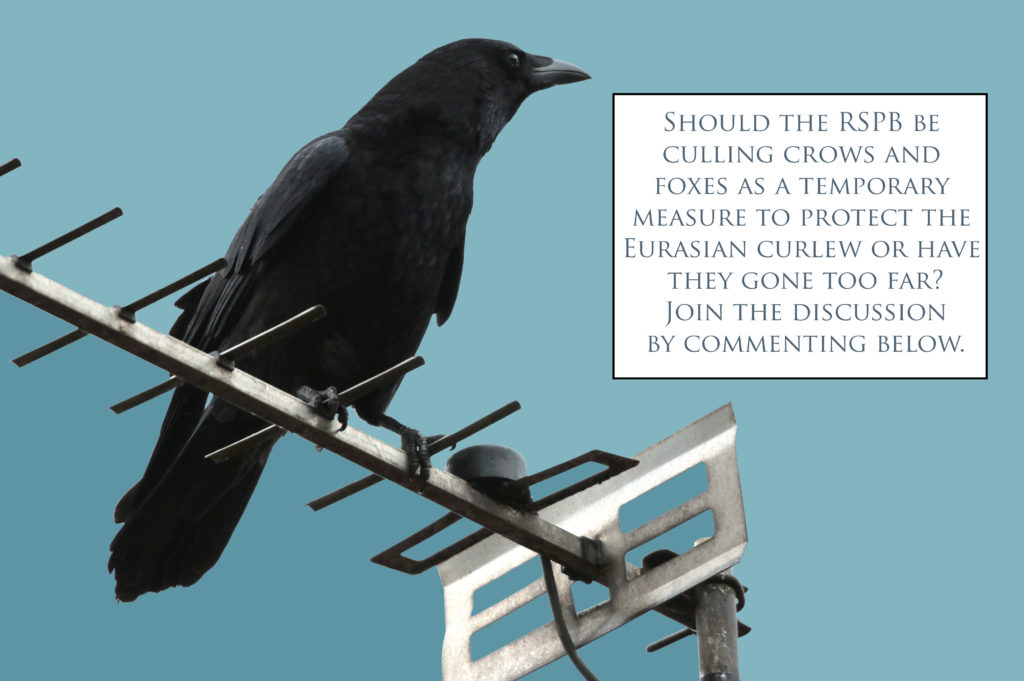
We have been RSPB members for many years now and always enjoyed knowing that the money we give is translated into wonderful habitats for a variety of wild creatures. With a lot of charities you can’t see whether the money is getting to the right people or animals but with organisations such as the RSPB, you can visit the areas that the money has created.
We were therefore very upset to find that a charity we so fervently believe in is actually culling some birds in order to save others. We can now understand their reasons for this but still cannot personally support it. Unlike many other members, we have chosen not to put an end to our membership as habitat loss is such a huge issue for many species, that we still wish to promote and support the creation and maintenance of suitable areas for wildlife.
We feel that the RSPB should have made their activities more obvious to supporters and should ensure that their member’s voices are heard as they are the financial backing to the organisation.
We cannot make up our minds about the wild boar cull. If the boar are not culled, their numbers will continue to increase and they could be very destructive. This may make for reasonable grounds to cull but we feel strongly that there is no excuse to cull the entire population. As a native species they have as much right to be in the UK as we do – perhaps even more. It may be in our nature to kill whenever something causes us trouble, but perhaps it’s time to find ways to live with these creatures where possible.
Useful Links:
Larsen Traps:
Licences to Kill:
Read more about the licences provided to kill a range of bird species on Jason Endfield’s blog here.
Find out what Natural England’s perspective is on the gov.uk website here.
The ‘Cull Conversation’:
The Guardian discusses culling in an article from the 28th May 2018, which you can read here.
Read ‘Animal Aid’s’ alternatives to culling and learn more about their point of view here.
The RSPB and Culling:
Read what ‘The Telegraph’ reports on the crow cull here.
Read more about the crow cull on www.dailymail.co.uk.
Get the RSPB’s perspective on the crow and fox cull from Martin Harper’s blog.
The Badger Cull:
Read about the badger cull on www.theguardian.com.
Parakeets:
Learn more about the issues surrounding UK parakeets in this ‘Manchester Evening News’ article.
Wild Boar:
Culling Deer:
Learn what ‘Countryfile’ has to say about the deer cull.
Understand more about ‘Deer Management’ by reading this section on the attadale.com website.
Visit ‘The British Deer Society’ website to become better acquainted with ‘all things deer’.
Read more about venison on the ‘Quartz’ website.
Geese:
Read More:




Comments
We love to know your thoughts on our articles so greatly appreciate you taking the time to comment. We may be unable to reply directly but are in the process of creating a FAQs page to answer any questions. We currently check all comments before they’re posted so they do not appear immediately on the website.
Thank you for visiting www.embracenatureuk.com!
